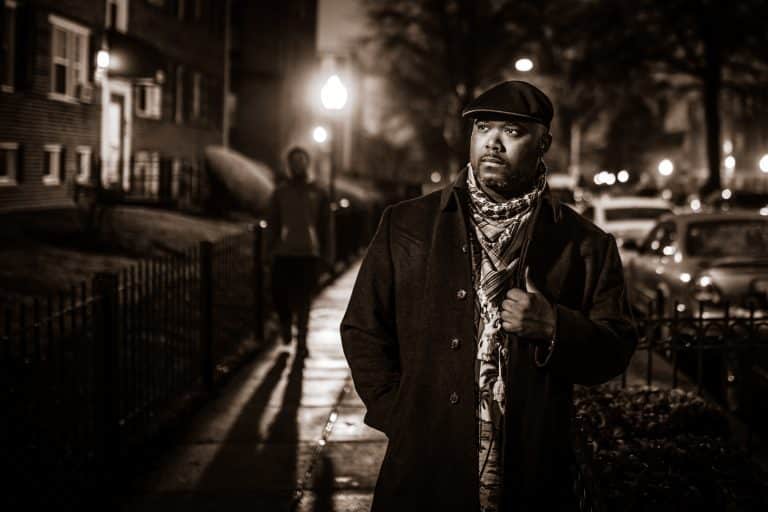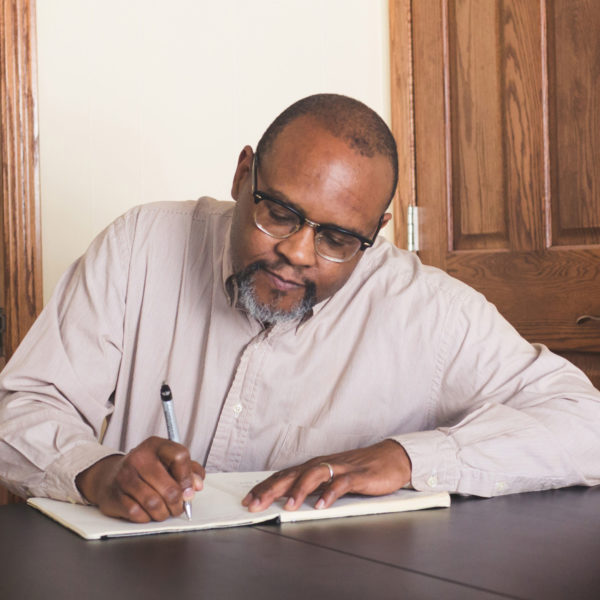
Image by Johnny Silvercloud/Flickr, Attribution-ShareAlike.
Carrying the Weight of How the White World Imagines You
“Imagination is more important than knowledge.”
—Albert Einstein
I didn’t mean to write this essay.
I had another one in mind that was going to speak mainly to white readers (as I so often have felt compelled to do). That essay would demonstrate what we already know about so many white people in the U.S. across the political and ideological spectrum: that the ways they imagine those of us who aren’t white and male and “normal” make it impossible for them to see us and themselves accurately. That the white imagination is killing us.
What did he see? From his vantage point beside the car, where was shadow, where was movement? Where was light? What threatening darkness filled his vision, and what was its source? What had the man in the uniform beside the car brought with him? Who conjured the monster he later described? In whom did it lie, and from whom did it emerge?
I planned to explain how the default equation of white maleness with normality leaks out during everyday interactions with white people, how often “good schools” and “good neighborhoods” serve as code for “predominantly white.” I would describe how, even in the mainly liberal spaces I inhabit, and among the politically progressive, white people show few qualms about surrounding themselves almost exclusively with other white people.
By “the white imagination” I mean a worldview in which the presence, perspectives, and experiences of white Americans — especially males — of European descent are taken are treated as “normal,” as the default. Though I’m not white, I feel qualified to describe the white imagination because it dominates the nation in which I was raised and in which I live.
The white imagination is killing us — and the white imagination is not limited to white people.
I wanted to explain that non-white people also came to see the world through the white imagination’s lens. I wanted to describe how many marginalized people have felt obliged to absorb it, how I’ve spent much of my own life peeling away the layers of its influence.
The white imagination raised me on 1960s and ‘70s TV almost completely devoid of non-whites. When it did portray people of color, they invariably fell into one of four categories: idealized representatives of “their people” (that is, bearing the markers of white, middle-class culture); folks tragically caught, and bravely trying to overcome, life in “the ghetto”; athletes and entertainers; or criminals.
The white imagination ignored authors of color during my high school and college years in the 1970s and ‘80s, authors often still unknown to my college students today, since the white imagination’s default for quality literature is writing by white authors. This despite the powerful writing from marginalized writers reaching back a century and more.
The white imagination expresses dismay at criticism that Dunkirk erases people of color since its default is that World War II and its soldiers were white, though history demonstrates otherwise.
The success of films such as Hidden Figures or Get Out surprises the white imagination since its default for “audiences” is white. Likewise, it finds the opposition to HBO’s Confederacy bewildering, since slavery fails to evoke for its white audiences the personal, visceral images of family members owned by other human beings.
Some white people may feel shock at Dr. Robin DiAngelo’s “racial breakdown of the people who control our institutions” in 2016-17:
Congress: 90% white
Governors: 96% white
Top military advisers: 100% white
President and vice president: 100% white
Current POTUS cabinet: 91% white
People who decide which TV shows we see: 93% white
People who decide which books we read: 90% white
People who decide which news is covered: 85% white
People who decide which music is produced: 95% white
Teachers: 83% white
Full-time college professors: 84% white
But under the sway of the white imagination, we move in this world daily witnessing the levers of institutional power and influence wielded almost exclusively by white hands.
Yes, through such examples, I intended to send readers reeling into self-examination. But something happened on the way to that essay: I got tired.
I mean the bone tiredness we get from being a brown body in the world and daily carrying the weight of how the white world imagines you. Because how do you contend with someone else’s fantasy of you, especially when they don’t admit it’s a fantasy? We are caught in another’s nightmare script, which treats everyday acts as capital crimes.
You are not doing what the man in uniform fears. You tell the man in uniform that you are not doing what he fears. The woman next to you tells the man in uniform that you are not doing what he fears. The man in uniform’s fear tells his imagination otherwise. He squeezes the trigger.
We are inkblots on which the white imagination so often projects its goodness. On the shadow of our skin, against brown and female and othered bodies, whiteness is imaged as virtuous, tolerant, rational, moral. Christian. American. Human. Normal. Beneath the wearying grind of trying to see yourself through the mind of those who have never really seen you — who refuse to see you — the knowledge that this may never change gives rise to despair.
Later the uniformed man said that the child’s presence heightened his fear. Later the uniformed man drew a circuitous route in which the child’s presence made the brown man before him more dangerous. Did anyone notice the irony? That this brown man who worked at a school, this brown man whom so many children (and their parents) esteemed, that the presence of his own child would be used to imagine him a monster. So I find myself asking again: Who conjured this monster? From whom did it emerge?
Yes, trying to write that essay to that audience — an audience mired unreflectively in the white imagination — made me tired. So I decided to write this one — to you — instead. And this is what I said:
The need to defend its “superiority” constrains the white imagination. The burden of staying orthodox and hiding the messy multiplicity of reality forces oppressors and the privileged to excise aspects of their own history. They can’t be weak; they can’t reveal mistakes; they can’t express the pain that’s part of life. This diminishes how much they can fail and learn and grow.
Our imagination has no such limits, partly because we have nothing to lose. For those of us marked as inherently deficient (with whatever “sympathy” or “pity” those labels have been assigned) imagining, creating, and naming are serious spiritual business. They mean survival, sanity, and redemption.
We know where the monster lives; we know where it came from. It’s the beast of the white imagination. And we answer with our own visceral, vivid imaginations — released in poetry, music, painting, photography, film, theater — to keep that beast at bay.
We know the difference between seeing the world through a white curtain and seeing the world clearly. We counter their images of us with our own, speaking to us and asserting our reality. Against their assumed virtue, we narrate their oppression and hypocrisy and scrub away the layers of their fantasies about themselves.
We know you can police bodies, but you can’t police imaginations forever. They bleed their truths like a stain spreading wide on a white rug.
Recalling all of this, I wrote the Other essay now before your eyes. I wrote it for us, not to talk about the imaginations that seek to destroy us but to reaffirm the imaginations that sustain us. I remembered that our heart pulses the beat of this culture, that the very idea of the United States is impossible without us. It’s our music, art, language, and even our hair that white America continually tries to slip over its pale skin.
Writing this, I sometimes still feel anger, grief, and even despair, but my spirit isn’t tired anymore. I feel something more useful than happiness and more powerful than hope. I feel life. I feel joy. Because my imagination has awakened, and I remember that we have stories of our own to tell.

